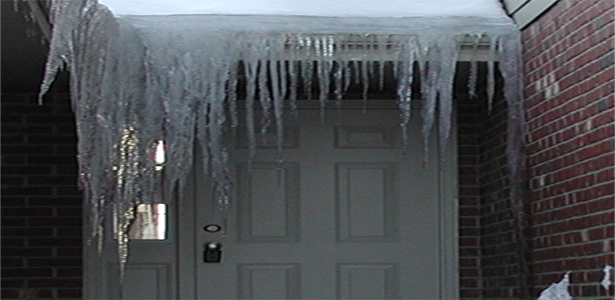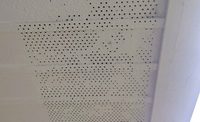If you shower, cook, wash dishes, clean, do laundry – if you breathe – inside your home, you’re generating water vapor. Lots of it. Gallons, in fact. Every day. And if it’s not ventilated properly out of the attic, that water vapor can become a moisture problem in the winter that may not be evident during warmer weather.
Attic ventilation is not just a summertime concern. It’s equally important in the winter. It’s a year-round need that should be properly handled by roofing professionals for their homeowner customers.
Fighting Moisture
On average, a family of four generates 2 to 4 gallons of water vapor each day just by living inside the house (Moisture Control in Buildings, Heinz R. Trechsel). One study measured up to 6 gallons! (Cooperative Extension Service of Clemson University, Linda L. Redmann) If that warm water vapor (which is naturally drawn to the colder attic air) condenses on colder surfaces inside the attic it could drip onto the insulation, potentially reducing the insulation’s R-Value. Water vapor that condenses on building members can eventually soak into the material, leading to the growth of mold and mildew, cause wood rot and negatively impact indoor air quality.
With a balanced flow of air movement through the attic, starting from the intake vents in the soffit/eaves or low on the roof’s edge combined with exhaust vents high on the roof at or near the peak, the moist air can be flushed out of the attic before it has a chance to be a problem.
Signs to look for indicating a possible moisture-related problem due to insufficient attic ventilation include:
• Mold and mildew
• Wet/compressed insulation
• Rusty nails or rust spots on the insulation dripped from the nails above
• Condensation marks on the wood members
Fighting Ice Dams
The other significant benefit of balanced attic ventilation in the winter is its success in the fight against ice dams in regions of the country where snow is common. Ice dams occur when heat escapes from the conditioned living space into the attic and becomes trapped (because of insufficient attic ventilation). As the attic air warms and rises toward the peak of the roof it melts the snow unevenly. The uneven snow melt becomes problematic if the climatic conditions are such that the ice melt refreezes lower on the roof – which is often colder than the peak of the roof if the attic ventilation and insulation is insufficient.
Any additional snow melt from above that hits the refrozen ice melt – that is, hits the ice dam – is blocked. The blocked water can back up under the shingles and seep into the home. The possible consequences: damage to drywall and woodwork, rot and structural damage to the framing members, warping of the roof deck, premature shingle deterioration, mold, and reduced indoor air quality.
Balanced attic ventilation (combined with the correct R-Value of attic insulation, which helps to keep the living space air from escaping into the attic in the first place) helps to fight the formation of ice dams in two ways. First, it helps to keep the roof deck temperature relatively close to the outdoor temperature. Second, it helps to eliminate hot and cold spots on the roof. As a result, the snow melts more uniformly. And ice dams can be minimized.
Where Does All This Moisture Go?
Through daily activities living inside the house a family of four typically generates 2 to 4 gallons of water vapor daily. Here’s a look at where the moisture comes from. A balanced attic ventilation system can help remove this moisture before it becomes a problem.
• Dishwashing = .11 gallons
• Cooking = .216 gallons
• Showers = .26 gallons
• Breathing/perspiration = 1.33 gallons
• Other contributing factors include humidifiers, cleaning/mopping, hang drying clothes indoors, pets, plants, and storing firewood indoors. (Note: Humidifiers can be one of the largest culprits when set incorrectly).
As the outside temperatures drop, don’t give attic ventilation the cold shoulder. Keep it high on your priority list. It just may prevent a homeowner callback.




.jpg?height=200&t=1641398117&width=200)

Report Abusive Comment